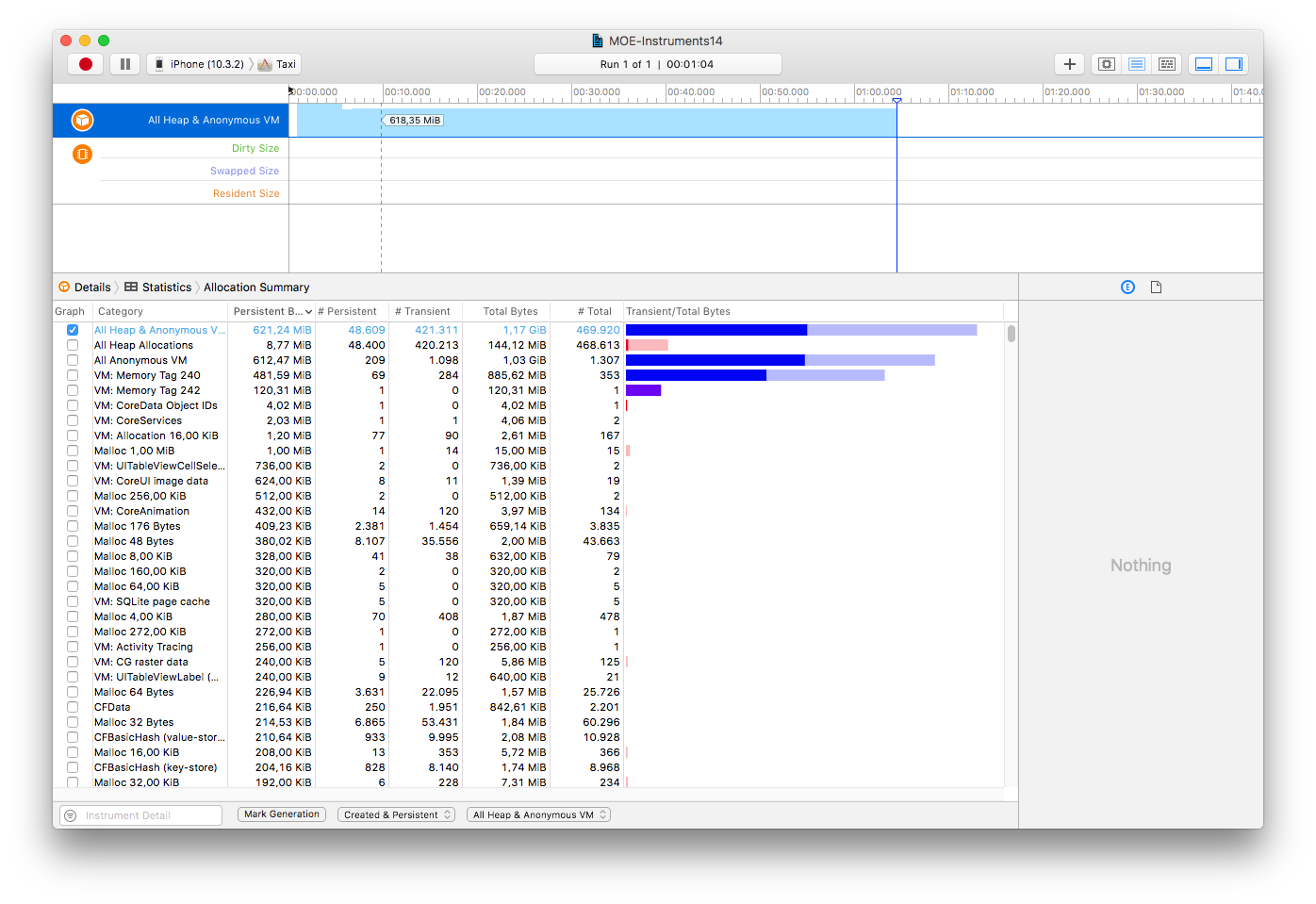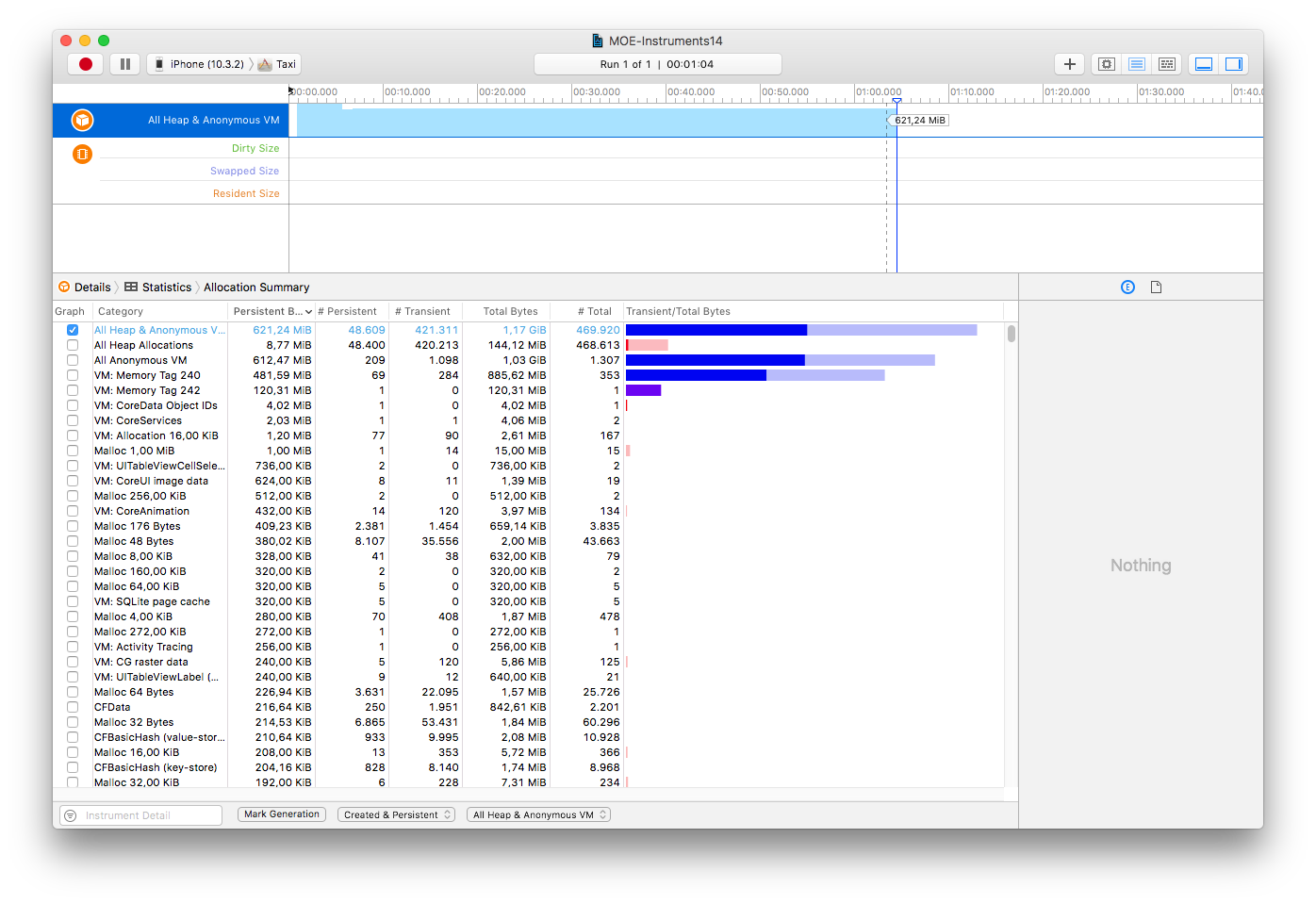Hi MOE Team,
I’ve developed an iOS application based on MOE.
The application is now mostly stable and ready for release, but:
Based on the huge RAM usage of MOE as shown here High RAM Usage in MOE my application is beeing killed by the iOS system in less than a minute of usage.
This prevents my company from an app release and we need help to solve this problem.
Looking through the forum and some advices from other users later:
I modified the main.cpp as described here: Intel Moe Project Porting Problem and carefully call “Runtime.getRuntime().gc()” at some critical points, which did not really help.
So I decided to create a small sample project with an UINavigationController as RootView. As RootController I took a simple view controller with a single button on it which navigates the user on tap to a table view controller displaying small (24*24) images in each row.
While profiling the sample application I recognized that the table view controller stays in memory although it gets popped from the navigation stack.
Even with this small sample the system kills the application in less than 1,5 minutes of usage (just repeat navigating forward and backward with such an example to verify this behavior).
Now I wrote this sample in Objective-C - just to exclude a retain cycle problem - and the application behaved normal, even with a look at the RAM usage.
With this in mind I tested some of your sample applications / source codes.
Even your samples behave as my small project and will be killed after a few minutes of usage (to be sure that I did not messed around with my own example).
Looking at the screenshots from here High RAM Usage in MOE I saw that the MOE itself needs up to 600MB RAM. I know that an iPhone 4s (a 32 bit system) has just 512MB RAM.
So i decided to test my sample application on an iPhone 4s and profiled it in detail.
The application happily runs ( with a 498MB RAM usage after app launch) and wont get killed immediately, but it behaves as explained above (just for additional information for you and others).
It would be great if you could tell me how to get rid of the high RAM usage (which is mostly caused by MOE, see here again High RAM Usage in MOE) to release our application as quick as possible.
Best Regards,
Jucl

